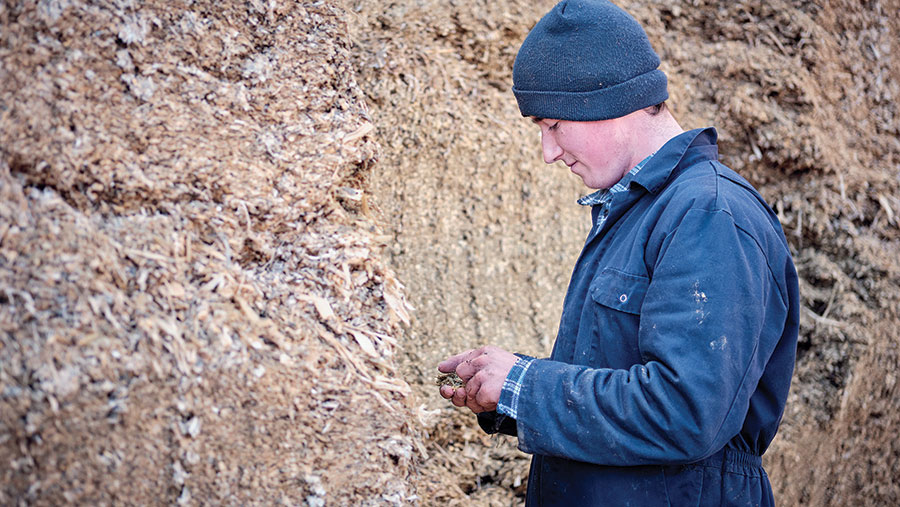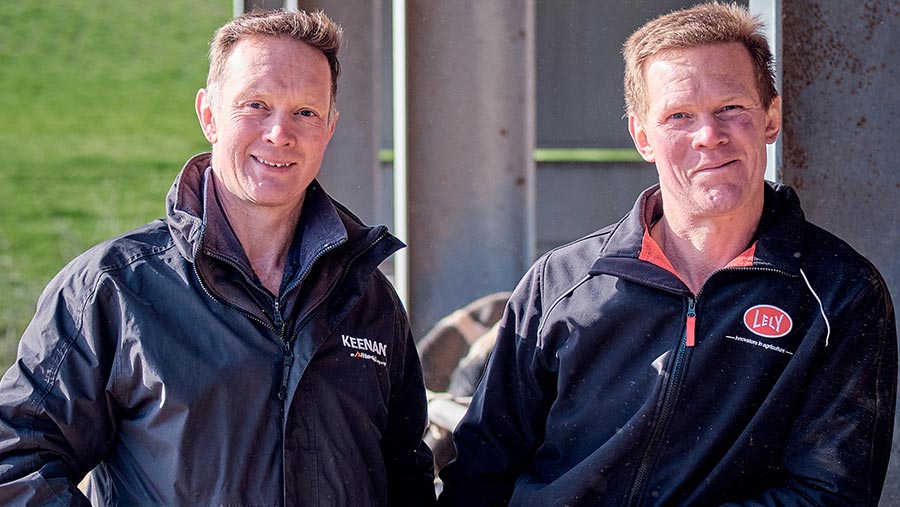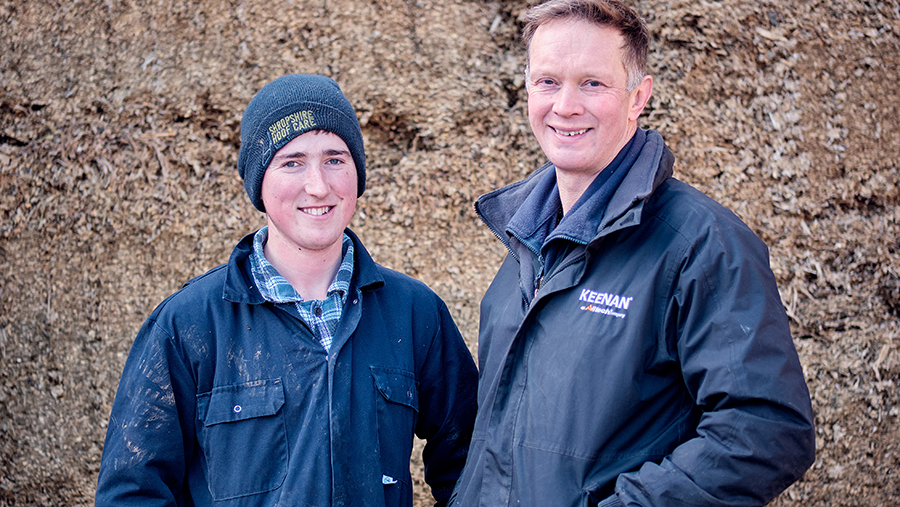Farm apprenticeships: Everything you need to know
 © AHDB
© AHDB Apprenticeships are mutually beneficial arrangements between an employer and an employee that allow practical skills to be built up alongside an educational programme.
Employers enjoy being able to mould young workers to best fit their business and passing on their knowledge, while ensuring key assets stay in the agriculture sector.
Apprentices can measure their progress in a real life environment and combine a paid job with a qualification.
See also: Coronavirus: How employers can get help with statutory sick pay
What is an apprenticeship?
An apprenticeship is a practical training programme alongside a full-time job, which allows participants aged 16 or over to earn as they learn.
It combines day-to-day work in the sector of the apprentice’s choosing with evidence-based assessment and leads to different levels of qualification.
In agriculture, this covers an increasingly wide area of skills and levels, which could range from stockperson or a management course to a science and surveying degree.
The individual programme is employer-led and should result in a fully-competent apprentice who also has good people and employability skills, such as accurate timekeeping and a strong work ethic.
What apprenticeships are available?
Different courses and levels are available from training departments, educational facilities and organisations such as the AHDB, which offers Level 2 and Level 3 apprenticeships in agriculture.
Bridgwater & Taunton College runs Level 2, 3 and 4 apprenticeships, as Mark Nash, trainer and assessor explains.
The Level 2 stockperson is a 12- to 18-month programme for a general farmworker role in a beef, sheep, dairy or pig enterprise.
Pros and cons of apprenticeships
Benefits
• Provide skilled workers for the future
• Increase staff loyalty and retention
• Free-up existing employees’ time
• Can revitalise a company
• Apprentice is learning in real-life situations while earning a wage and seeing the highs and lows of agriculture
Pitfalls
• Takes a committed, tenacious person to be able to learn on the job while studying, to stick to a long-term plan and stay motivated when their peers may be having the university experience
• Remember you are dealing with young people so expect bumps along the way
Source: Clare Keegan and Mark Nash
Requirements include English and maths at GCSE grade 2 or above, or functional skills at level 1.
The Level 3 advanced apprenticeship is geared towards students with a little more responsibility on the farm, such as rearing calves or setting up the drill and drilling crops, in addition to a level of basic record keeping.
English and maths requirements here are GCSE grade 4 or above, or functional skills at level 2.
The Level 4 is run over 30 months and is aimed at students coming into agricultural management who have more responsibility on farm.
This could include interacting with the vet, nutritionist, agronomist or bank manager, to make some managerial decisions.
At Bridgwater & Taunton, students also get to compete in groups to tender for a farm and present their projects to a team of bank managers for scrutiny.
Harper Adams University delivers degree apprenticeships up to Level 7, which is a five-year course.
Course options include: food and drink advanced engineer degree apprenticeship; chartered surveyor (rural) degree apprenticeship; and food industry technical professional degree apprenticeship.
How does it work?
At all apprenticeship levels, the students come in to college once a week on a day-release basis, says Mr Nash.
This theory learning also covers part of the mandatory 20% off-the-job training.
Employers commit to providing or organising about 10% of this, which can be in the form of training new skills, regular staff meetings, vet talks or farm walks.
“We try to support the employers with the ongoing process of keeping apprentices on track,” says Mr Nash.
“We also want to ensure the apprentices are being involved in the full aspect of business and not just being left with menial jobs.”
The college’s apprenticeships are generally assessment-based rather than exam-based.
Students are observed by their employers and college trainer assessors throughout their course and gather evidence to store on an electronic portfolio.
The final examiner has access to this portfolio, and when the apprentice is ready, they are put forward for an assessment through Lantra, which includes three practical tasks, an online test and a professional discussion.
At Harper Adams, the degree apprenticeships run for multiple years with blocks on and off campus.
These are assessed through exams, assignments and work-based projects.
What are the employer and apprentice’s obligations?
Clare Keegan, business development manager at Harper Adams, says obligations include: a contract for the life of the apprenticeship; commitment statements; regular reviews; and the employer must be committed to developing the right person for a specific job.
Apprentices should be treated like any other employee and are subject to the same regulations such as working time, health and safety, equality laws, and they should be given at least 20 days’ annual paid holiday a year, as well as bank holidays.
How much do apprentices get paid?
Apprentices must be paid at least the minimum wage by the employer.
This starts at £4.15/hour for apprentices and increases depending on age and progress through course.
Are there any funding opportunities?
Employers with a pay bill of more than £3m/year must pay the apprenticeship levy, and will receive funds to spend on training and assessing apprentices.
Those who do not pay the levy, pay 5% towards the cost of training and assessing the apprentice.
The government will pay the remainder, up to the funding band maximum, directly to the training organisation.
Incentive payments are available in certain circumstances, such as employing a 16-18 year old, employing fewer than 50 staff, or working in specific sectors.
How can I get involved?
Employers can contact their nearest agricultural college if they are interested in taking on an apprentice.
Potential apprentices can look on the National Apprenticeship Service website for jobs in their area or they can apply to do an apprenticeship and the facility will then assist them to find a job.
Apprenticeships can also be completed on family farms, if appropriate.
Case study: Michael and Tony Ball
Brothers Michael and Tony Ball are AHDB Strategic Dairy Farmers in Derbyshire and have worked with apprentice George Ball (no relation) since 2013.
Farm facts
- Coton Wood Farm
- 304ha
- 500 cows
- All year round system
- Eight robot milkers
- Supplying Freshways
- 49ha of winter wheat
- 20ha of miscanthus

Tony and Michael Ball © AHDB
George, whose family are also in farming, was studying a GCSE in agriculture locally, which involved one day a week spent on farm.
This was run by Dart Training, an organisation that also offered apprenticeships.
When George left school, he was keen to start working on a farm, so Michael and Tony offered him a full-time job and he moved on to an apprenticeship.
While working at Coton Wood Farm, George has completed Level 2 and Level 3 diplomas in work-based agriculture, and a Level 4 Higher Level apprenticeship in agricultural business management.
George, who also built up a flock of about 100 ewes on rented land, said: “The best part for me was the hands-on approach.
“I really enjoyed being able to follow the progress of things you have done throughout the days, weeks, seasons and years, and I think being able to see and do what you’re being taught is a good way of learning.

George and Tony Ball © AHDB
“The worst bit is it can be quite challenging to do a full-time job and keep up with coursework and have a social life away from the farm, which is probably the main thing you miss out on by not going to college or university.”
Tony, who also employs another Level 3 apprentice, said: “For us, the main benefit is that you are employing someone at the start of their career, who – hopefully – comes with no preconceived ideas of how things should be done, so we can mould them into our way of working and it makes it easier for them to work to our standards.
“The one drawback is the time and supervisory input required at the outset with someone who has little experience.”
The team have worked so well together that they are planning to continue doing so by way of a joint venture.
Tony and Michael are in the process of buying another farm with the intention of milking a new autumn block calving herd this summer, and George will be running this unit under a contract farming agreement.
George said: “I am looking forward to getting to realise my dream of milking my own cows and putting my own ideas into practice.
“Coton Wood Farm has undergone a lot of changes over the past seven years, going from a 200-cow dairy unit with a parlour to a 500-cow unit with eight robots milking the cows, which was great for me while doing the apprenticeships, as it gave me the chance to see the latest technology in the industry.”
George would recommend apprenticeships to anyone who wants to get stuck in, earn as they learn, achieve qualifications and gain hands-on experience.
